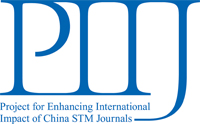Objective
Duranta repens is reported to contain a wide array of secondary metabolites, including α-amylase and α-glucosidase inhibitors, and it has potent antioxidant activity. The present study evaluated the network pharmacology of
D. repens (whole plant) with targets related to diabetes mellitus and assessed its outcome by evaluating the effects of the hydroalcoholic extract of D. repens in streptozotocin-nicotinamide-induced diabetes mellitus.
Methods
Phytoconstituents of
D. repens were retrieved from an open-source database and published literature, and their targets were predicted for diabetes mellitus using BindingDB and the therapeutic target database. Protein-protein interaction was predicted using STRING, and pathways involved in diabetes mellitus were identified using the Kyoto Encyclopedia of Genes and Genomes pathway browser. Druglikeness, ADMET profile (absorption, distribution, metabolism, excretion and toxicity) and cytotoxicity of compounds modulating proteins involved in diabetes were predicted using MolSoft, admetSAR2.0 and CLC-Pred, respectively. The interaction network among phytoconstituents, proteins and pathways was constructed using Cytoscape, and the docking study was performed using autodock4.0. The hydroalcoholic extract of D. repens was evaluated using streptozotocin-nicotinamide-induced diabetes mellitus animal model for 28 d, followed by an oral glucose tolerance test. At the end of the study, biochemical parameters like glycogen content, hepatic enzymes, antioxidant biomarkers and lipid profiles were quantified. Further, the liver and pancreas were collected for a histopathology study.
Results
Thirty-six different secondary metabolites from
D. repens were identified to regulate thirty-one targets involved in diabetes mellitus, in which protein-tyrosine phosphatase 1B (PTP1B) was primarily targeted. Enrichment analysis of modulated proteins identified 12 different pathways in diabetic pathogenesis in which the phosphatidylinositol 3-kinase-protein kinase B (PI3K-Akt) signaling pathway was chiefly regulated. The docking study found that durantanin I possessed the highest binding affinity (–8.9 kcal/mol) with PTP1B. Similarly, ADMET profiling showed that the majority of bioactive constituents from
D. repens had higher human intestinal absorptivity and minimal cytotoxicity to normal cell lines, than tumor cell lines. Further, an in vivo animal study reflected the efficacy of the hydroalcoholic extract of
D. repens to lower the elevated blood glucose level by stimulating insulin secretion, maintaining pancreatic β cell mass, regulating glycolysis/gluconeogenesis and upregulating the glucose uptake in skeletal muscles.
Conclusion
The present study reflected the probable network interaction of bioactive constituents from
D. repens, their targets and modulated pathways, which identified the prime regulation of the PI3K-Akt signaling pathway and PTP1B protein. Modulation of PTP1B protein and PI3K-Akt signaling pathway could contribute to enhancing glucose uptake, insulin production and glycolysis and decreasing gluconeogenesis in diabetes, which was evaluated via the experimental study.
 Table of Content
Table of Content














